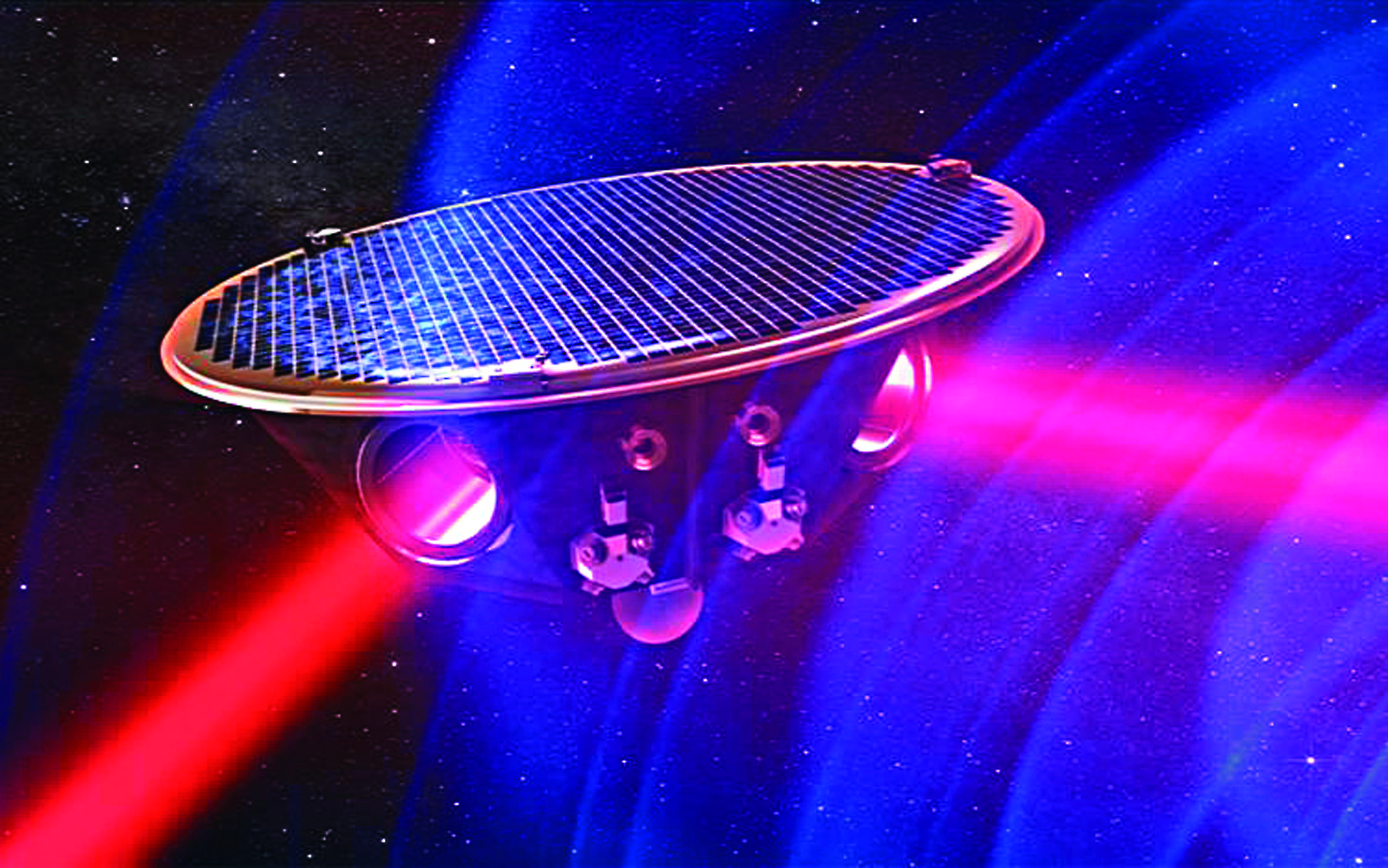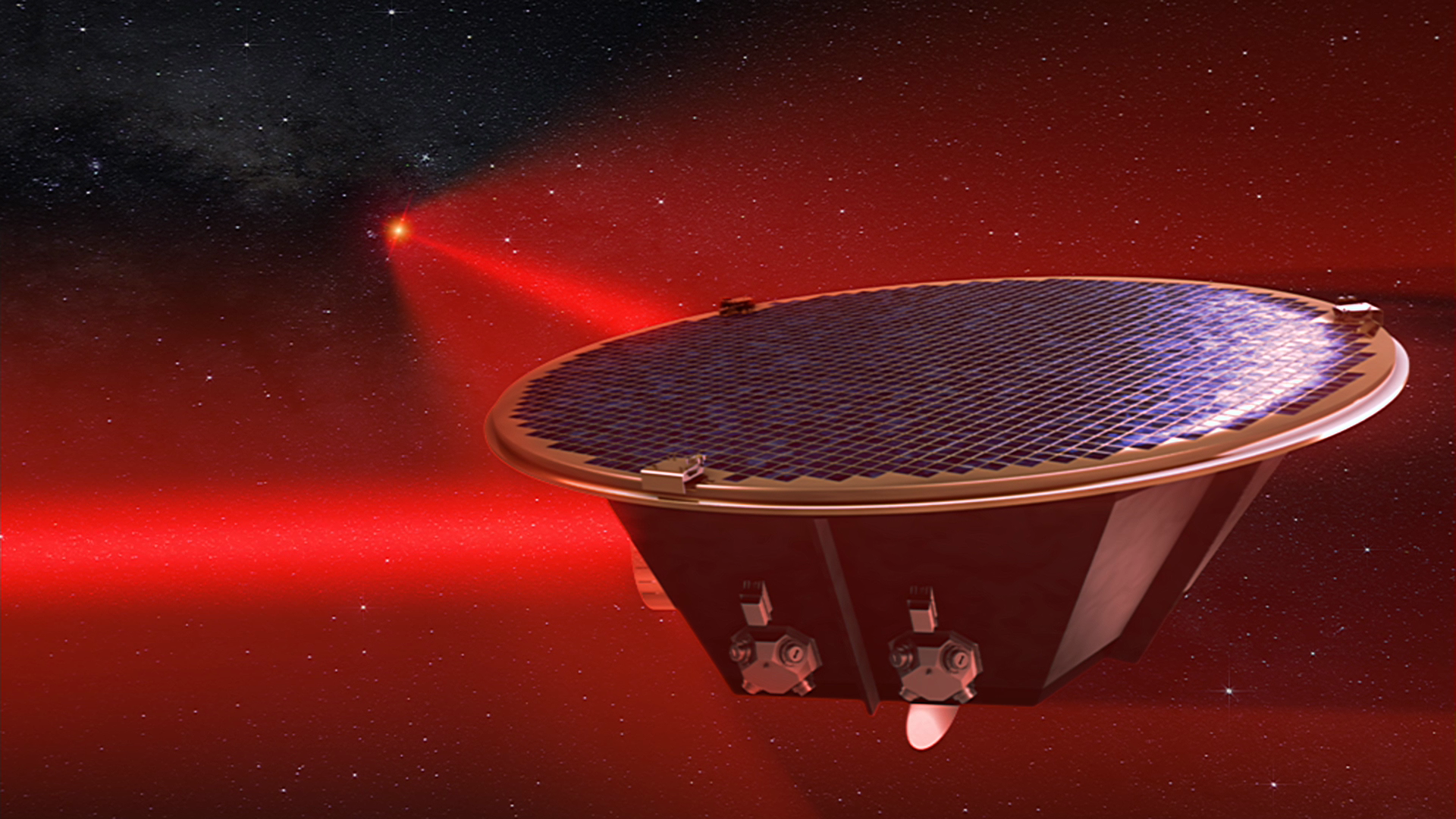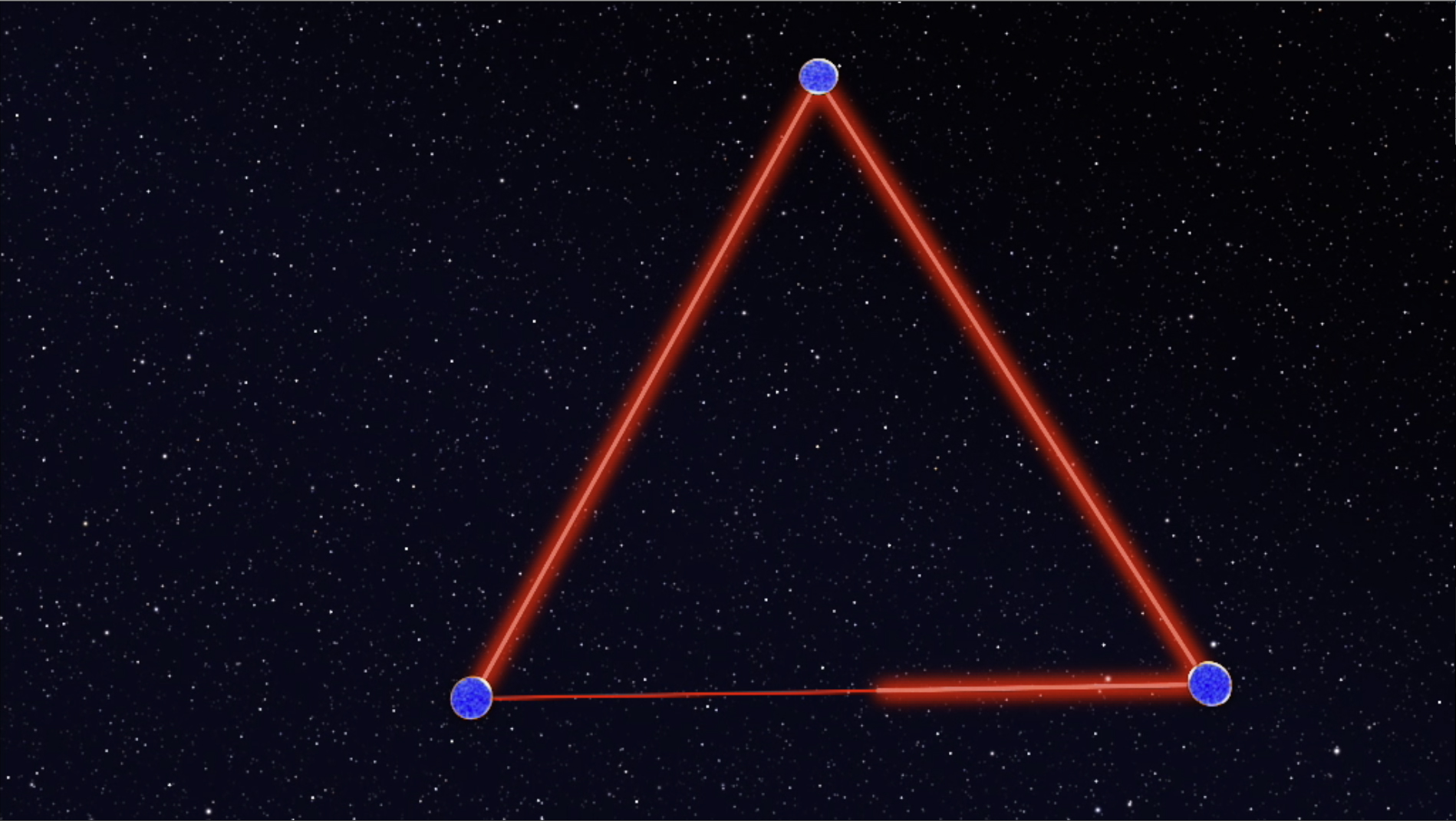LISA: ESA research mission to study gravitational waves
Together with the University of Hamburg, DESY is supporting the ESA space mission LISA by designing and building a phase meter simulator as Electronic Ground Support Equipment (EGSE) based on the MicroTCA.4 standard.

Gravitational wave research with the "Laser Interferometer Space Antenna"
LISA, short for Laser Interferometer Space Antenna, is a mission of the European Space Agency (ESA) that aims to measure gravitational waves, to which NASA is also contributing. Unlike existing ground-based gravitational wave detectors, LISA will be installed in space. LISA consists of three satellites which will follow Earth in its orbit around the Sun, arranged in the form of a triangle and about 2.5 million kilometres apart. Like ground-based detectors, LISA is based on so-called laser interferometry. In this, two laser beams that have previously travelled along different paths are superimposed. This method can be used to detect the stretching and compression of space-time, so-called gravitational waves. These are produced during large astrophysical events such as when neutron stars or black holes merge.
The accuracy of the measurement depends, among other things, on external forces acting on the so-called test masses inside the detector. Gravitational waves cause the separation between the test masses to fluctuate, and this oscillation is measured by laser interferometers. In the case of earth-bound detectors, many external sources of interference can be suppressed, but not the effect of seismic waves on the test masses. This limits the sensitivity of such detectors for gravitational waves with low frequencies and long wavelengths. In LISA, the test masses are in free fall inside the satellites, far away from any disturbances. This allows measurements to be made with extremely high precision in the frequency range between 0.1 mHz and 1 Hz. Gravitational waves that were created when supermassive black holes of several million solar masses merged, or in the early universe, lie roughly in this frequency range.

Gain new insights into the origin and evolution of the universe
Researchers around the world hope that gravitational wave detection with LISA will provide new scientific insights into the origin and evolution of the universe. Technological components are being designed for the ground support equipment of LISA, i.e. those instruments with which LISA’s operation will be tested in advance on Earth, with funding of just under 1.5 million euros from the German Aerospace Center (DLR) and supported by the Federal Ministry for Economic Affairs and Energy. In addition to an electronic readout system – the so-called phase meter, which measures the phase of the laser – this also includes optical components which can be used to rapidly build ultra-stable interferometers to investigate sources of noise and optical components.

MicroTCA.4 as the basis for designing the phase meter
DESY’s Machine Beam Control Group is supporting the development of the phase meter as a subcontractor in the DLR-funded research project. The phase meter is being designed based on the MicroTCA.4 standard, which is developed and used at DESY to control accelerators, among other things. “MicroTCA originally comes from the telecommunications industry and was modified by DESY together with industrial partners specifically for physics applications. This allows precision measurements of a large number of analogue signals and their simultaneous high-performance digital processing in a single system,” explains Holger Schlarb, head of the Machine Beam Control Group at DESY. “These features are required both to control accelerators and to successful build LISA’s ground support equipment.”

